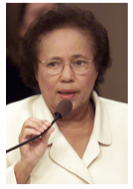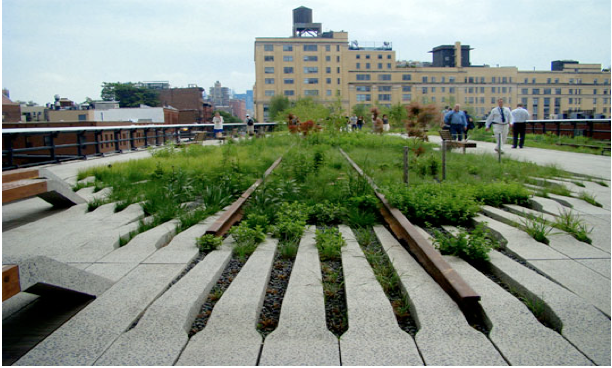Toxic Auto Emissions are Killing Our Kids
WHERE’S THE LOGIC-Back in 2015, people started telling Mayor Eric Garcetti that toxic vehicle emissions where harmful to people and especially for children, but he rejected the idea repeatedly. Instead, he insisted that the best place for bike lanes in LA was in major thoroughfares; thus, his Mobility Plan 2035 called for Bike Lanes.
In Eric Garcetti’s defense, only recently did anyone realize that auto emissions where harmful to children’s health. In 1961, the State of California required cars to have positive crankcase ventilation systems.
In 1966, California did legislate to control auto emissions, but Garcetti, who was born in 1971, was not even a fetus yet, so I guess we can forgive him for not knowing about LA’s poor air quality then. In 1967, California created the California Air Resources Board, but we cannot expect Garcetti to know about this agency -- it was formed four years before his birth. By 1975, cars that ran on leaded fuels were no longer allowed to be manufactured for California, but Garcetti was only 4 years old at that time, so we cannot blame him for not knowing about this fact as well.
After Garcetti’s most wonderful and compassionate Mobility Plan 2035 was released in 2015, he was still unaware that auto emissions were harmful. So he pressed forward with bike lines in heavily trafficked thoroughfares like Westwood Boulevard and Reseda Boulevard.
Bike lanes have allegedly been removed from segments of Sunset and Hollywood Boulevards that pass through Hollywood, but not due to any concern that we are giving our children cancer. Rather it’s because the streets were already way too narrow and the intersections were rated F for Fail. Ironically, CD 13 councilmember O’Farrell thought bike lanes in heavily trafficked streets were are a great idea, so he voted “Yes.” Yes, for lung cancer.
Due to the city’s love affair with giving children and other bike riders cancer by placing bike lanes in LA’s most congested boulevards and avenues, Garcetti’s Mobile Plan 2035 I and II both provide for toxic bike lanes.
On September 20, 2015, Garcetti, along with the other cancer lovers at City Hall, was sued for concealing the health studies from the EIR for MP 2035 -- research that showed that placing bike lanes in heavily congested areas was adverse to people’s health. Bike riders, as everyone other than Eric knows, are exercising. As they peddle they breathe more deeply and when they come to upward inclines, they peddle even harder and inhale more deeply. At this point trucks, especially diesel trucks, emit more toxins.
Since September 10, 2016, two community groups, HELP and CCLA, having been fighting in court for the city to take the time to study the health impacts of toxic air emissions in bike lanes. Garcetti has stood firm: no studies. While we know that City government has many sane people who do not think that children should be exposed to heavy concentration of toxic fumes, the orders have come down from the top. No studies that show that toxic auto emissions have adverse health impacts will be allowed!
This absolute denial, even in face of on-going litigation and the attempt of others in the city to get the bike lanes moved, is business-as-usual for City Hall. The first modest step would be to study the situation, but even that is verboten. Because the rest of the world is not as regressive as Los Angeles, we have the data and almost everyone else is trying to move bike lanes away from vehicle traffic.
Then out of left field, we have the most curious resolution at City Council. On March 22, 2017, Councilmembers Huizar and Koretz presented a motion that the City needs to study the adverse health impacts of housing constructed next to freeways. The motion says:
“This revelation is consistent with long-standing concerns of people who live near traffic pollution zones suffering from higher rates of asthma, heart attacks, strokes, lung cancer and pre-term births. The California Air Resources Board provides guidance in its 2005 Air Quality and Land Use Handbook that recommends against "siting new sensitive land uses within 500 feet" of a freeway and certain high-traffic roadways.”
Wow, is our City Council up-to-date! It has a report from 2005! What’s next? “Lindbergh Baby Kidnapped!”
Garcetti was not only alive in 2005, but he had already been elected CD 13 Councilmember by the time the California Air Resources Board issued its Air Quality and Land Use Handbook. While we may forgive little Eric for not knowing about the adverse health impacts of vehicle emissions which were published before he was born, what are we to make of his not knowing about them in 2005 or later in 2015 when he issued his Mobility Plan 2035 [MP 2035] which featured bike lanes where the toxins were most lethal? One person has allegedly said that it is unfair to expect Garcetti to read anything that is not attached to a check from a real estate developer.
It seems that if placing an apartment house or school within 500 feet of a freeway or a heavily trafficked street is a health hazard, then placing a bike lane on Reseda Boulevard, Venice Boulevard, etc. would be a dangerous land use. But not to Mayor Garcetti. He still thinks that our kids should peddle their hardest right there next to the diesel trucks.
What does Garcetti have to say -- in 2017 – about housing within 500 feet of a freeway or high traffic roadways?
According to David Zahniser’s LA Times article on March 24, 2017, “L.A. Officials Push for New Steps to Address Health Risks from Homebuilding near Freeways,” Garcetti said, “We should look at both zoning requirements and technology to ensure that people who live in housing always live healthy,” Garcetti said. “I grew up next to two freeways during leaded gasoline days. My family’s experienced cancer. We had a cancer cluster on our street, so I’m very personally sensitive to this. So absolutely. Whether it’s through spacing, or through technology and ventilation, we should be looking at ways of protecting Angelenos.”
Really? Garcetti is “personally sensitive”? Cue the crocodile tears. Is it his personal sensitivity to cancer deaths that makes him such a vigorous supporter of children peddling the hardest where the air pollution is the greatest? Garcetti knows that he won’t be politically liable 20 to 30 years from now when today’s kids are dying prematurely of lung cancer. So there will be no political blow back on him.
The multitude of studies from around the world establishing the extreme health hazard to cyclists and especially to children have been presented to Garcetti, but he closes his eyes. Hyperlinks for many of these studies were listed for Garcetti in the petition that HELP and CCLA filed with the Court. It would have been easy for Garcetti to click and learn about the “brand new, never before known” fact that auto emissions have adverse health impacts on children. Maybe Garcetti was too busy counting his loot from the Sea Breeze project ($60,000) and from Rick Caruso ($125,000) to be bothered to look at the data.
Expect three things to happen:
1) The apartments will continue to be constructed contiguous to freeways.
2) Kids’ bike lanes will remain in major thoroughfares.
3) Garcetti will continue to express his personal sensitivity.
(Richard Lee Abrams is a Los Angeles attorney and a CityWatch contributor. He can be reached at: [email protected]. Abrams views are his own and do not necessarily reflect the views of CityWatch) Edited for CityWatch by Linda Abrams.



 Last Tuesday, Berkeley (photo left) became the third California city to call for Trump's impeachment.
Last Tuesday, Berkeley (photo left) became the third California city to call for Trump's impeachment. 

 In the end, PLUM agreed to reinstate most of the excised boundaries and also to approve HPOZ status: a double win for the pro-HPOZ group and a disappointment for the anti-HPOZ group. PLUM sent a motion to the full city council that was unanimously approved on Tuesday, March 28. An ebullient HPOZ Chairman Mark Zecca said, “We do this not just for ourselves, but for generations to come who will hold dear that this very important part of Los Angeles was saved for them.”
In the end, PLUM agreed to reinstate most of the excised boundaries and also to approve HPOZ status: a double win for the pro-HPOZ group and a disappointment for the anti-HPOZ group. PLUM sent a motion to the full city council that was unanimously approved on Tuesday, March 28. An ebullient HPOZ Chairman Mark Zecca said, “We do this not just for ourselves, but for generations to come who will hold dear that this very important part of Los Angeles was saved for them.” 
 Villaraigosa, on the other hand, was unwilling to make this commitment because of his strained relationship with Garcetti. Villaraigosa is still harboring a grudge because he believes that Garcetti leaked a damning report on his 2009 Solar Initiative to the Los Angeles Times that was responsible for the voters rejecting Measure B, his payback for IBEW Union Bo$$ d’Arcy’s financial support of his 2005 race for Mayor. This also hurt Villaraigosa’s reelection campaign as he received only 55% of the vote, effectively trashing his run for Governor in 2010.
Villaraigosa, on the other hand, was unwilling to make this commitment because of his strained relationship with Garcetti. Villaraigosa is still harboring a grudge because he believes that Garcetti leaked a damning report on his 2009 Solar Initiative to the Los Angeles Times that was responsible for the voters rejecting Measure B, his payback for IBEW Union Bo$$ d’Arcy’s financial support of his 2005 race for Mayor. This also hurt Villaraigosa’s reelection campaign as he received only 55% of the vote, effectively trashing his run for Governor in 2010. 





 It's really an attempt on the part of alarmed people to preserve civilization. The organizers might have called it the March for Civilization and stated the case just as well, but the March for Science is catchy and will draw attention. Let's hope that this isn't confined to big cities on the coasts, and that small town sites of land grant colleges all over the country draw their own crowds.
It's really an attempt on the part of alarmed people to preserve civilization. The organizers might have called it the March for Civilization and stated the case just as well, but the March for Science is catchy and will draw attention. Let's hope that this isn't confined to big cities on the coasts, and that small town sites of land grant colleges all over the country draw their own crowds. 























